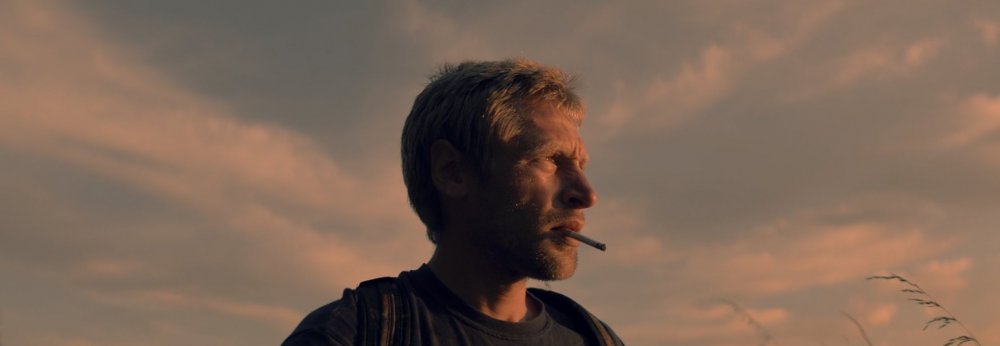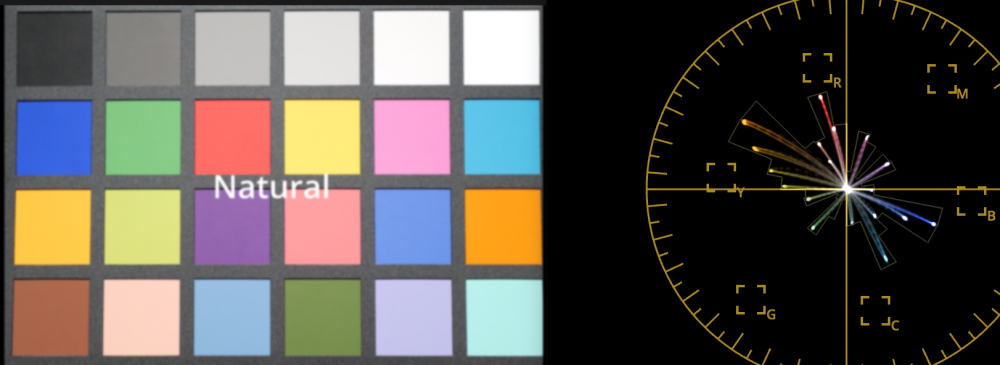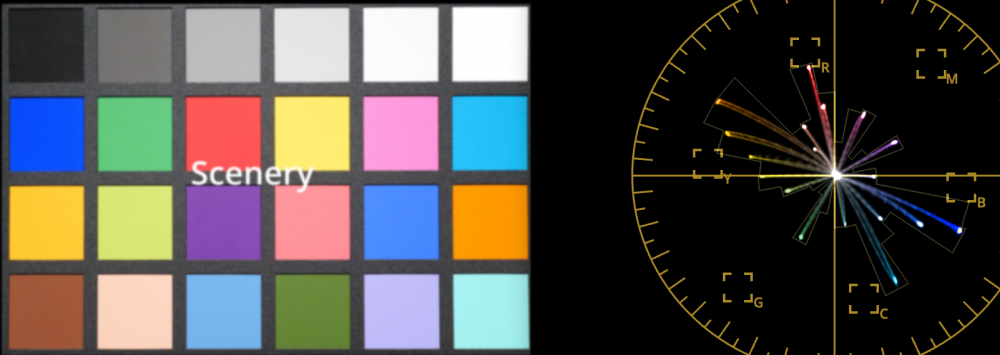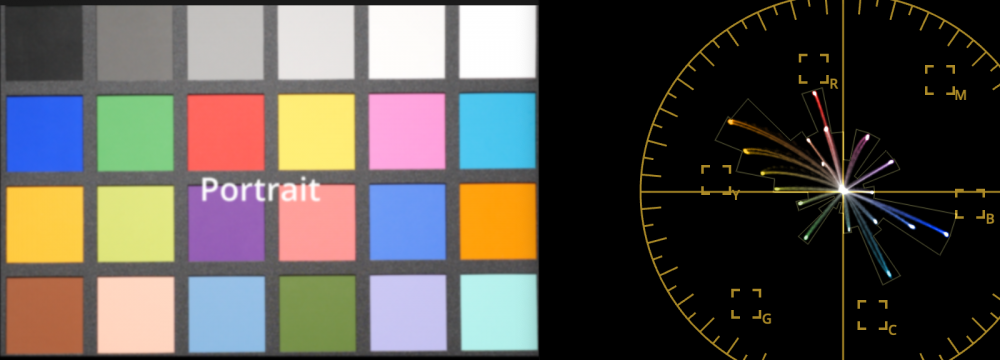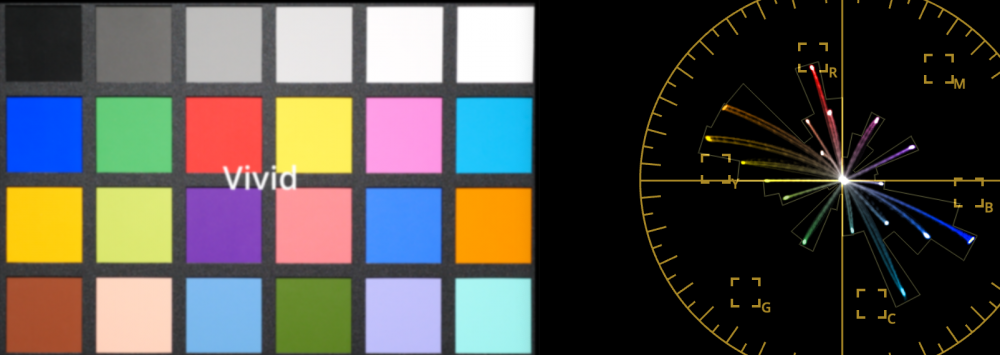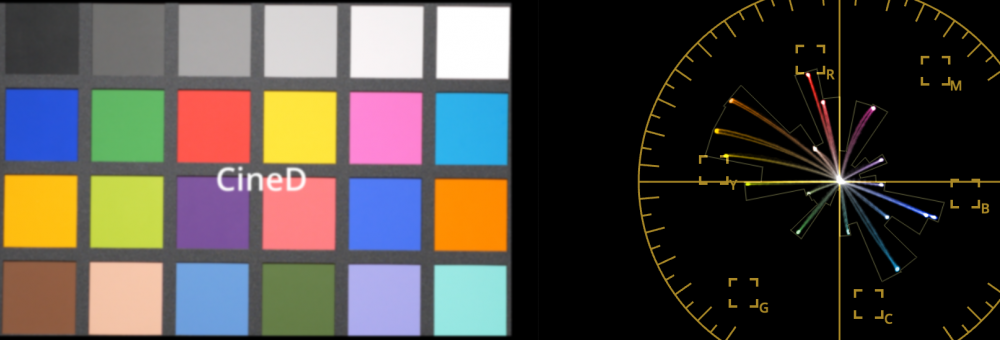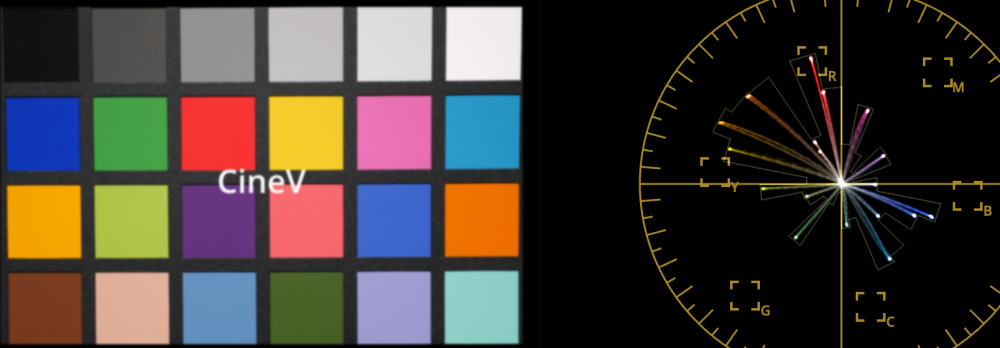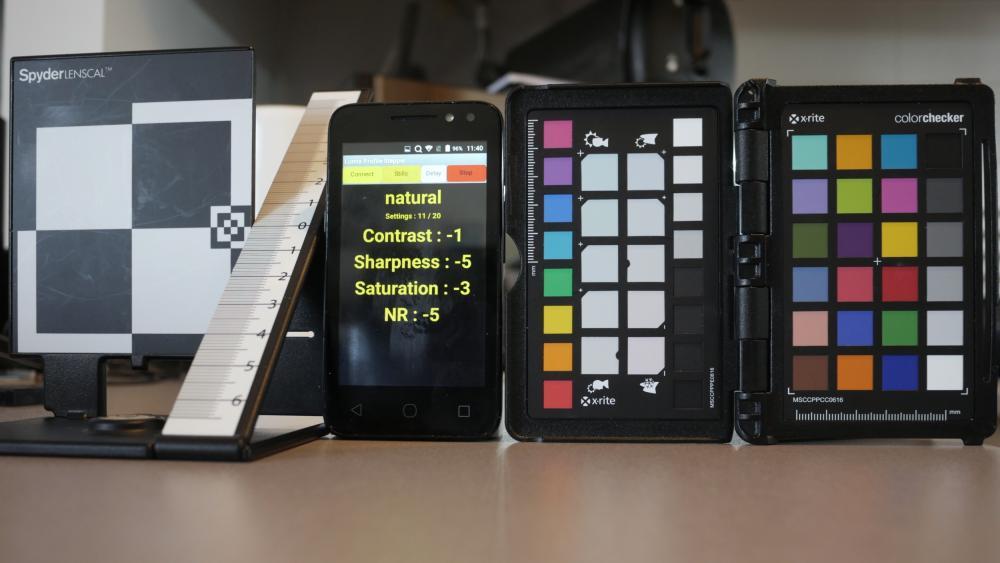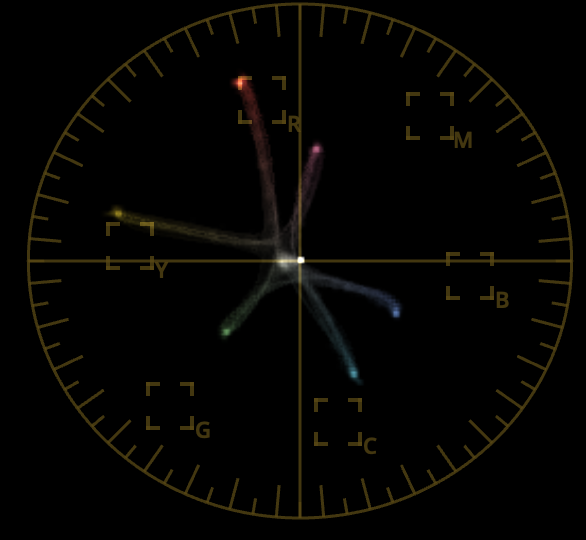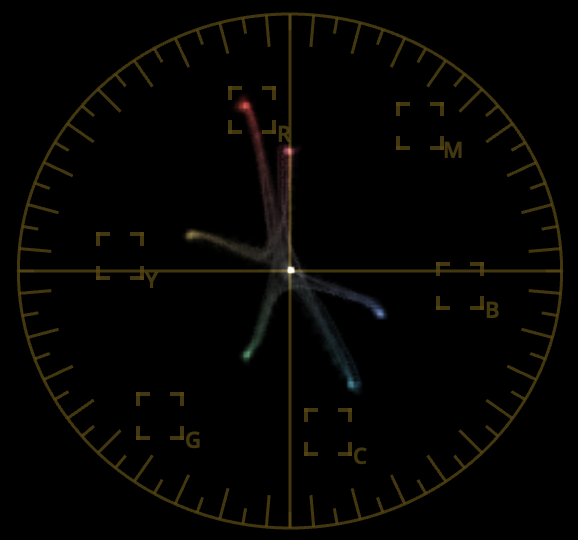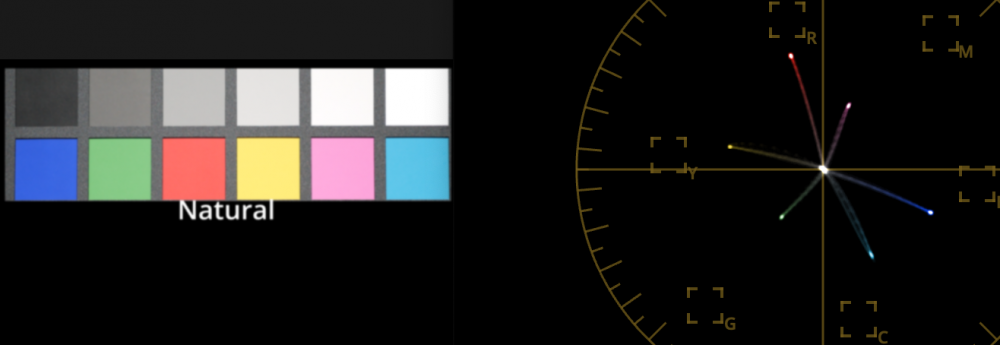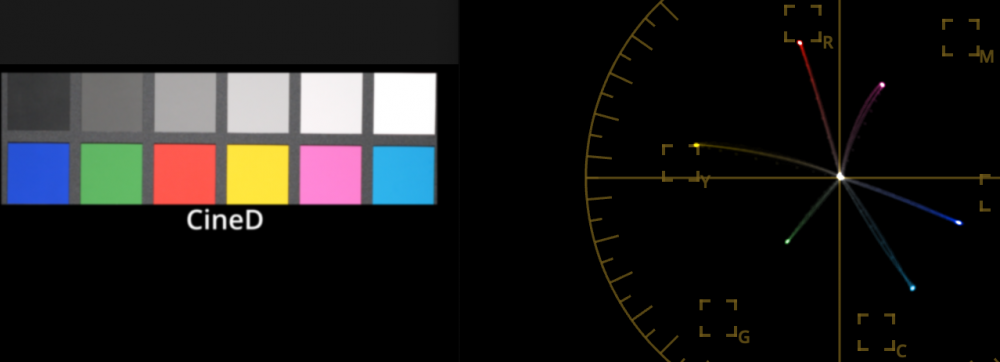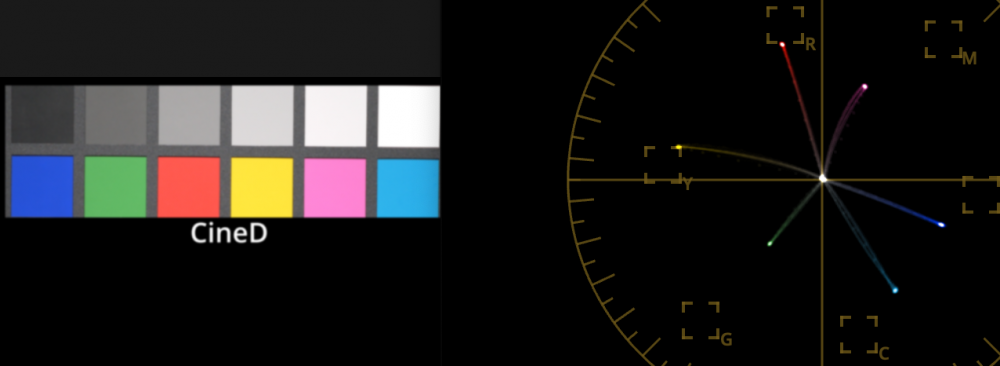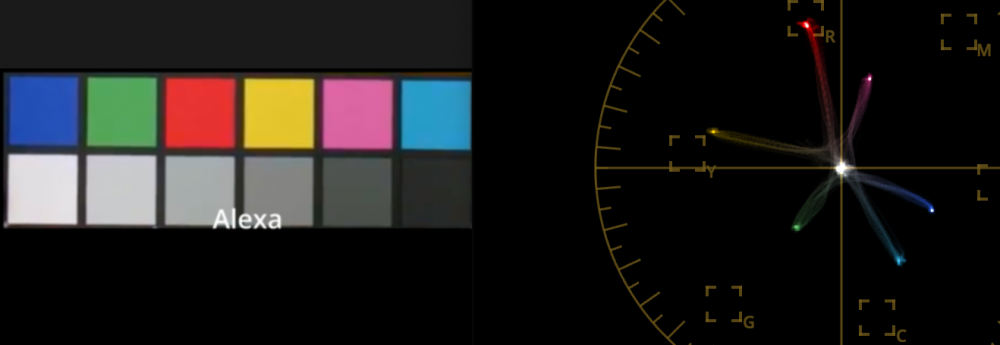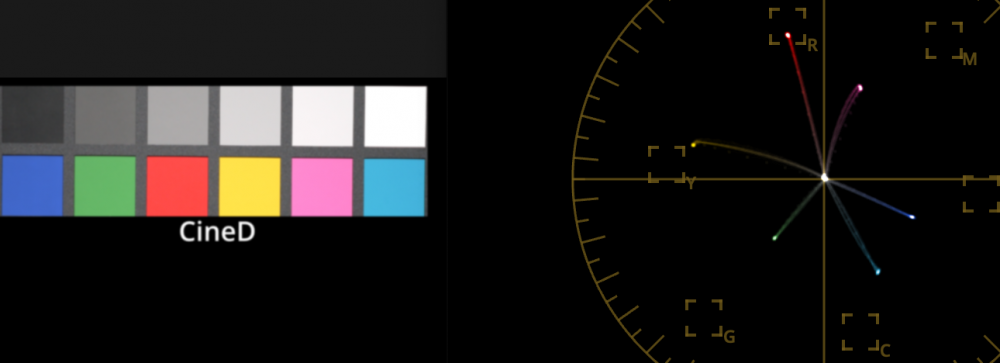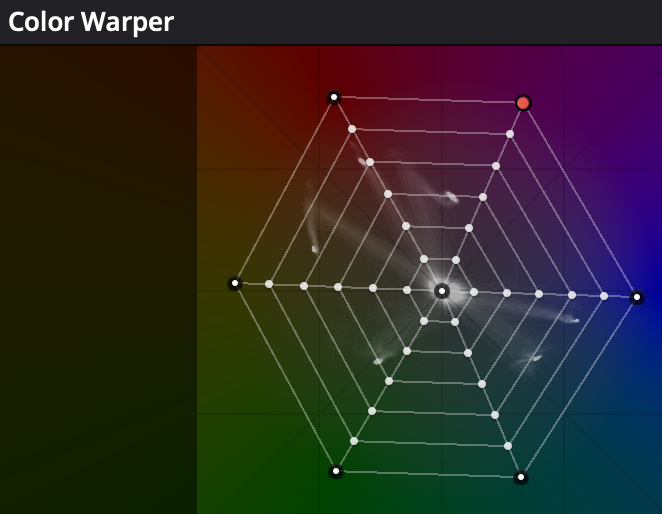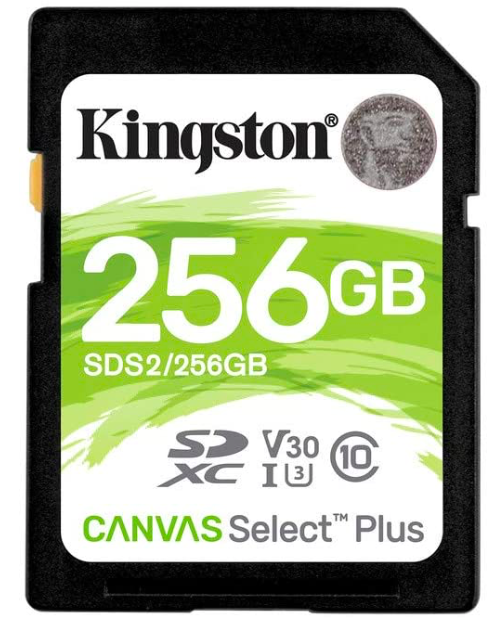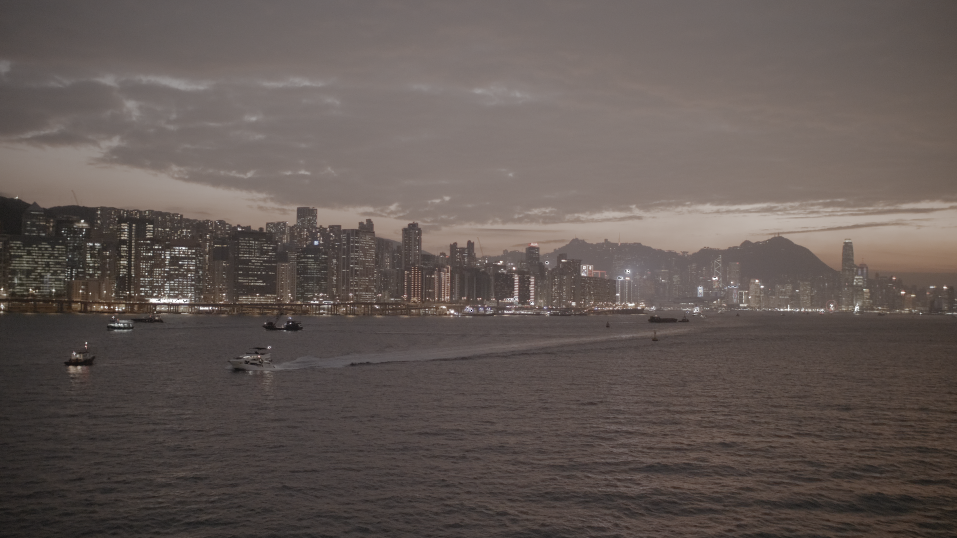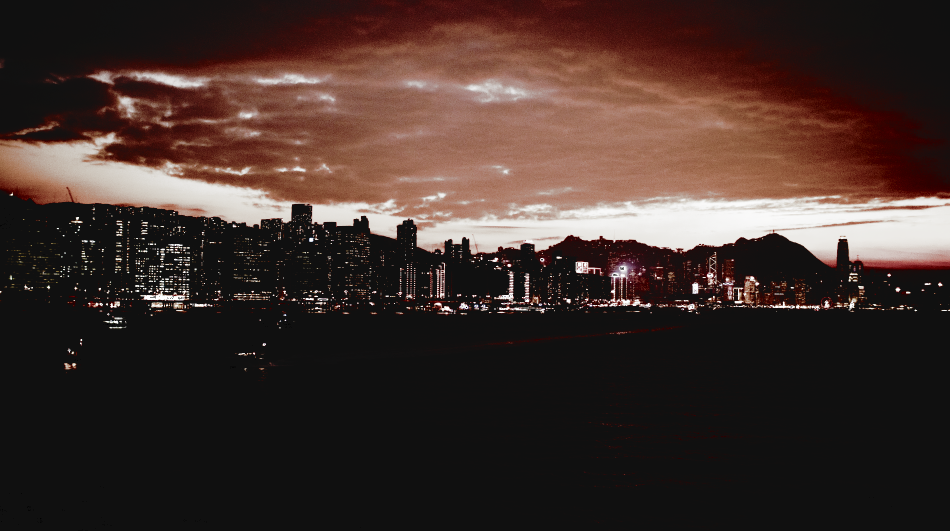Leaderboard
Popular Content
Showing content with the highest reputation on 11/27/2021 in all areas
-
Canon R3 6K raw light with FD lenses
andrgl and 2 others reacted to BenEricson for a topic
This is true. The noise issue in extreme situations on the C300 Mkii can be really bad. You can avoid by shooting at ISO 500 and avoid C-LOG 2 in those types of situations. You're right, the C500 Mkii is an incredible work horse camera. It's disappointing that there is no light weight 6k codec. My point was that the C300 Mk2 and the C70 are not worlds apart. In 95 percent of situations, they will look nearly identical. I was also disappointed that they removed a lot of the picture profiles in the C70. A lot of the baked in profiles that I had used in the past, (rarely,) have been removed. There is no Cinema EOS Original, no BT.709 in Clog2, they also removed the 12 bit 444 2k codec. Interesting enough, when I compared both cameras in the Wide DR codec, there was more noise on the C70 than the C300Mkii in ISOs over 1600. I kind of expected the opposite. https://vimeo.com/543915327/c8c6ad9ce9 I guess my main point was that the Komodo clearly has a significant leap in quality (to my eyes.) The C500ii, C70, and C300iii all kind of look similar. The main reason the C300ii is better ergonomically is the viewfinder, the natural weight of the camera, the full sized XLR ports, the connections being on the back rather than the side, the relocatable grip, the movable monitor. The C70 needs a cage and monitor to even get close. The lack of an EVF in the C70 really sucks tbh. Again, this all depends on what you're doing. If you're shooting with a gimbal, monopod, or locked off, the C70 is better. If you're shooting handheld run and gun with something like the 24-105, then the C300ii is likely better. The speed booster is awesome. There is vignetting when shooting wide open on some lenses. (this is related to the speed booster, not the lenses.) Yes, you can magnify during recording. Speaking of anamorphic. I did rent an Atlas 32mm over the summer. The aspect was pretty crazy because the lenses are 2x, but they did kind of remove the typical Canon look. Still kind of soft compared to the Komodo imo.3 points -
Now I've "made friends" with the GX85, I'm now looking at its colour profiles. I've installed the CineD / CineV hack from @BTM_Pix so are including these in my testing. In these tests, I'll be: Looking at what the colour profiles actually do, with a colour checker and scopes Comparing these profiles to the colour profiles of the P2K and Alexa Grading selected GX85 colour profiles to match resemble the P2K and Alexa Working out what the best combinations might be and just generally working out what setup I will implement First, what do the colour profiles actually do? I took the GX85, 12-35mm f2.8 lens (at 35mm) in the 100Mbps 4K mode, and shot my colour checker in direct sunlight. I then brought those into Resolve, cropped, and blurred a little for cleaner traces in the scopes. I actually clipped the white square on the checker a little, oops!, but no test is perfect and neither am I, however I think the results should still be useful. Here goes..... Natural - let's use this as the baseline. For those unfamiliar with these kinds of tests, it is worth noting a few things though: Firstly, this profile is NOT NEUTRAL. Anyone who's seen a colour checker in real life can tell you that the colours in the two middle rows (the two below the greyscale) are all about equally saturated - ie, very saturated. These are the colours that are meant to go in the little reference boxes on the scope. Notice how the red trace almost reaches the R box? Notice how the pink and purple boxes look really pastel? Overall the profile is much more saturated in the upper-left (orange) and lower-right (teal) directions. This is a relatively typical colour palette that looks pleasing. Also notice how the colours are rotated towards those two directions? it's especially noticeable in the teal direction where the blue is rotated clockwise towards the Cyan reference box, and the cyan is rotated anti-clockwise towards the Blue reference box. These characteristics give a nice starting point, and are very commonly seen in colour profiles in general, although as the name says, this is a relatively Neutral implementation of that look. Scenery - it's basically the Natural profile with more saturation, except notice the green is pushed slightly towards blue to give a but more hue separation in the greens. Oddly enough, that might help give visual interest with scenery shots! Portrait: Similar to Natural but more saturation (less than scenery) but this one slightly compresses the skin-tone ranges, pulling the yellows towards orange and the reds slightly towards orange too. This helps to mask blemishes and uneven skin. Nice. Vivid is..... vivid. Panasonic really deliver huh! Like natural but with heaps of saturation. CineD. The legend. Lots going on here! Here's what I see: Slight compression of skin-tones and desaturating right on that hue Higher saturation of all colours except yellow-greens (a hue I know I dislike) and mauve (a hue named after an old lady) Also slightly compressing tones in the teal direction CineV which is obviously more contrasty with a much lower black level, and consequently is also more saturated than CineD, but is also slightly more "correct" with some hues being closer to their theoretically correct locations, for example, the Red is now almost perfect. If you take CineD and pull the shadows down then you get something very similar to CineV, only with more saturation (contrast creates saturation). If you then drop the saturation a touch to match, you notice that CineD creates more even saturation between the warm tones and cooler tones, whereas CineV has more saturation on the warmer tones and less on the cooler tones. Note, this isn't a WB difference - this is with the WB set correctly on both profiles. TLDR; Natural profile isn't natural, but is a moderate amount of a relatively common colour profile pushing things towards orange and teal, and compressing skintones for more flattering skin rendering. Other profiles kind of build on this foundation and kind of do what they imply with their names. CineD and CineV are a bit more complex again, with the main difference being the amount of contrast.2 points
-
GX85 Alexa Conversion!! (and Colour Profile Investigations)
Mark Romero 2 and one other reacted to projectwoofer for a topic
I have the S1Alex Alexa conversion which I’m using with the S5 with great success. It’s for V-Log footage but includes conversions for HLG and CineD which I’m also using. So as much as I understand that it’s not the same camera, I’m currently experimenting with using the conversion on CineD footage from the GX85. I have not made many tests yet (let alone scientific ones!) but to my eyes the GX85 footage behaves in a similar way so the end result is pretty close.2 points -
If you want to drill down into the different permutations of the elements within the profiles then I'd humbly suggest that you have a look at my profile stepper application which will automate the process for you. Here are examples of it being used on an FZ2500 (but obviously works on the GX85 and all other Panasonic cameras) to run through the contrast and saturation permutations of the profiles. CINE LIKE D SCENERY VIVID You can choose as many or as few parameters to change as you wish and the range of them so in these examples I'm only looking at Contrast from -5 to +2 and Saturation from -5 to +3 but you can go the whole hog if you wish to and do +5/-5 on every parameter if you are looking for a total in-camera look for example. I'd be tempted to include the NR one as it will have an impact on colour. The interval for the parameter changes in those videos are set to 3 seconds but you can adjust it obviously in the app. Its easy to generate the subtitle file to embed into the video like I've done here if you wish but it has a display mode whilst running so you can just use the screen of the phone/tablet to show the changes like below. Unfortunately, the shadows and highlight controls are not accessible externally so can't be included in the automation so especially if you are looking for a total in-camera look (or just for completeness) then once you are in the ball park of the profile that you want then I would be inclined to re-run the stepper with smaller permutation changes of contrast and colour only with manually set shadows and highlights permutations.2 points
-

GX85 Alexa Conversion!! (and Colour Profile Investigations)
Mark Romero 2 and one other reacted to kye for a topic
Now for reference, and thanks to the beauty of standard colour checkers, let's review what the P2K and Alexa look like. From this rather handy video: I pulled various scopes. It's likely to be relatively pointless (and depressing) to compare the GX85 Dynamic Range with these, so I'll skip that and focus on the hues. P2K Primaries: Alexa primaries: Things to note here are: Both these cameras have strong looks Orange and Teal directions are much more saturated than the Green / Magenta directions Hues in the Orange and Teal quadrants are rotated closer to the mid-point, with the Teal quadrant more compressed Both the P2K and Alexa pull the Magenta towards Red and leave the Green mostly untouched The P2K is stronger than the Alexa even, with its Magenta being almost on top of the Red, and with lowered Yellow saturation it's really skewing the colours to the Red / Cyan line, rather than the Orange / Teal line Personally, I think the P2K profile is a little too strong a look for me (you might disagree which is fine) but it's useful to see that the P2K and Alexa are both in the same direction from a "correct" look (with the colours in the reference boxes). As such, I'll proceed to compare the GX85 with the Alexa colours. GX85 Natural: Alexa: GX85 CineD We can't compare absolute levels of saturation because I didn't perform the P2K test, which has also been put through YouTube compression, but we can look at the relative hue and sat of the hues. What I'm seeing: Alexa has similar saturation between Red and Yellow, Natural has Red>Yellow and CineD has Red<Yellow, but these are always adjustable Natural has similar Magenta to Alexa, with CineD giving it more saturation and it being less rotated towards Red Green in CineD seems to match better with Alexa CineD representation of Blue and Cyan is too saturated (comparing to Red as reference) but Natural is also too saturated and with a less accurate match In terms of which one to choose when grading to match the Alexa, I think you could use either profile. The challenge is that you're capturing in 8-bit so you want to match in-camera as much as possible. For this: Both CineD and Natural have the highest shadows of any of the GX85 profiles I tested, so are more likely to contain the whole DR from the camera Levels of saturation are a balancing act, too much sat in camera and you'll clip strong colours, but too little in-camera and you'll be amplifying noise when you boost saturation in post Now to match the CineD to the Alexa. Unmodified CineD Alexa - with colour balance and sat GX85 - "Alexa conversion" (ha ha ha) Just for fun I used the new spiderweb tool thingy in Resolve to match them: Next is to test it on real footage.2 points -
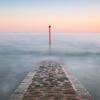
Panasonic S5 User Experience
PannySVHS and one other reacted to liamlumiere for a topic
Music video of old familiar track shot on S5 4K V-Log 10-Bit 4:2:2 shot with 20-60 kit lens. AF didn't wander. Camera is small & light and powerful. Great shooting experience.2 points -
For anyone buying a Pocket or Micro for the first time - as well as those who already own them - there has been a challenge for a while now around buying new memory cards that actually work with them. I've been using a specific Sony one that is reliable but very pricey and not always readily available but I had some Kingston ones recommended to me that apparently fit the bill so I ordered one to try it out. EDIT >> Happy to report that it worked in ProRes and RAW without any dropped frames on both cameras, including the 3:1 RAW at 60fps on the Micro. Happy to report that it worked in ProRes and RAW without any dropped frames on both cameras in standard frame rates, but begins dropping frames at the 3:1 RAW at 60fps on the Micro but is OK at 50fps. << EDIT They are reasonably priced (sub €40 for the 256GB) and readily available from Amazon in different sizes up to 512GB. https://www.amazon.es/Kingston-Canvas-Select-Plus-SD/dp/B07YGYCR3V IMPORTANT > Please see @bjohn post following this one regarding long term reliability.2 points
-

A7IV opinions
Mark Romero 2 reacted to lebigmac for a topic
Hey, what is your opinion of the A7IV? What do you think of it, in comparison to the S5, for instance, as a hybrid shooter with 10bit opportunities? The A7IV is 1600 € more than the S5 here + the prices for some L-Mount have come down. I saved all my dimes to jump on the 'next' A7 and skipping the A7iii, but now, I find it quite hefty priced compared to its peers. My main reasons to long for the next A7 were: - good low light performance - video specs that allow for post correction of white balance mismatches and decent highlight and shadow recovery - up to the task for five years or more I think, the A7iii might cover most of it as well, which is around 1200 € in mint condition. What do you think? Does anybody already own the A7IV?1 point -

Canon R3 6K raw light with FD lenses
BenEricson reacted to Django for a topic
Gorgeous! C70 ticks so many boxes for me. It really sounds like the perfect cam for my needs (A-cam for an R6 replacing C100/C200). I feel its really under-rated because of its form factor and no RAW or 6/8K. At it's price point it's competing with the C300ii/6KP/Komodo/R5/R3/FX3/FX6. All great cameras but the C70 really sounds like that perfect balance between all of them.1 point -
In which case I would certainly defer to that longer term usage report and say buyer beware then.1 point
-
That's interesting: I had this same model but the 128 gb version, and it wouldn't record anything above 30fps without dropped frames after a few minutes of shooting. The card also died completely a little more than a year after I bought it. I wonder if these 256gb ones have different specs and are better made? I ended up buying a couple of the Angelbird ones that were tested for BMPCC and BMMCC and those have been flawless, but they are much more expensive than the Kingstons.1 point
-

Just bought a new camera for 2022 - the small but mighty GX85
projectwoofer reacted to kye for a topic
I should also say that nailing WB in post, when shooting in difficult lighting conditions and without a grey card, has actually been one of the most difficult skills I've had to learn as a colourist. I found that routinely I would struggle to get a shot looking ok, but if I posted it to the colourist forums they'd reply super quickly with shots that just looked right on, and when I copied them I'd found they'd just done a simple WB adjustment, added contrast and saturation. I also find that I see small WB errors regularly on videos where people shoot in mixed lighting, even on those "cinematic" videos, so I suspect I have become attuned to seeing it and knowing what direction to push it in. The more I learn colour grading the more I realise that stunning colour grading isn't using 27 fancy controls and adjustments, it's using the very very basic controls and having serious knowledge about how to use them. Great colour is done much more simply and much more skill-fully than you'd think. There's a common saying "simplify for results, complicate to profit" and the YT colourists are definitely interested in profit. There's not much of an audience for colourists who just hammer out great looking grades with the same simple tools over and over again, and the only real advice they can give is "go and grade 10,000 shots using only the LGG controls". (BTW, that's really good advice!)1 point -

Just bought a new camera for 2022 - the small but mighty GX85
projectwoofer reacted to kye for a topic
My edits tend to not have a shot longer than a few seconds, so in that sense things don't normally change that much and I'll grade each clip on the timeline separately. However, a really quick trick in Resolve is to grade a clip how you want it to appear at the start, then copy it and adjust the grade so it's it how you want it at a particular time, then have the second clip fade in over the top of the first clip. It's an easy way to "automate" every parameter available rather than just what your NLE provides in terms of "automation" features. I suspect your question assumes that the AWB is the culprit for the colour shifting over the course of a shot when everything else remains static, but I haven't found this to be the case really. AWB and exposure in general will shift when the environment shifts, such as lighting changing (eg, sun going behind a cloud) or you moving the camera (panning or walking outside from inside etc). In these situations you'll want to have an adjustment in post anyway, and cinematographers will do things like pull-aperture to try and keep a reasonable exposure. In a sense, the camera auto-changing these things is just a robot doing these things for you, that once again, you would want to do yourself anyway and having it done mostly in-camera just helps get the compressed file closest to where you need it to be. Maybe you've had bad cameras that "hunt" with their AWB functions? It's never been a problem for me.1 point -
In my experience, there are two kinds of (serious) codec tests that people do. The first is for when you have controlled shoots and you are trying to understand the absolute sweet spot of the camera. For this, you shoot a controlled scene using a model (or two), test charts, and anything else you might think is usable, and you shoot it at 0, and then under and over by 1 stop, 2 stops, 3 stops, 4 stops. Then you bring everything back to proper exposure in post and look at the skin tones and noise and other image attributes. This is used in seriousness by professional cinematographers who do the tests and then work out that perhaps the sweet spot is +0.5 stops, and they'll shoot the camera there for every shot on 8 and 9-figure productions because that's the best place for skin tones, or whatever. "You expose camera X at X stops under/over" is common knowledge once a camera comes out and is tested and everyone will do that - why wouldn't you? The second is for when you're not shooting in controlled shoots and you want to know how far you can push the camera. For this, you shoot a range of situations and deliberately push the camera in all sorts of ways, under and over exposing in a range of circumstances, doing things like in low-light under exposing with native ISO and raising in post vs rising ISO in-camera etc, filming in mixed lighting and fixing in post, filming in radically contrasty lighting, filming highly saturated things like neon signs and car tail-lights to see how it handles extreme saturation, etc. These tests are designed to work out how far you can push the camera. Taking one shot is suitable for neither scenario and tells you very little. It's.....lazy. I'd suggest that the people who use 5D with ML are actually out shooting rather than talking about cameras. It's one of the closest matches there is for an Alexa (the others being OG BMPCC / BMMCC, and maybe Sigma FP, etc) so once you get that setup it's camera choice = solved so move onto next choices like lenses and lighting and composition and story and then navigating the entire process to make and publish something. Here's a test I did with the GH5 10-bit 150Mbps mode, which isn't even the GH5s best mode BTW, in trying to break the codec. I chose a flat looking scene and tried to break the flattest looking part of it (the clouds) to see what was there. This is informal but is an example of a test to see where the limits of the 10-bit are. I'm not in the R3 target market (or Canon Cripple Hammer target market for that matter) but if I was spending $6K on a camera then I'd want to know: where the sweet spot of the camera is how far I can push the darn thing and still get a "nice" image (ie, acceptable for a main shot - according to my standards) how far I can push it and get a shot that is still usable in an edit (ie, for 1 second) ..and you want to see some work that puts things in context? Sure. I am an amateur who shoots travel and events for family and friends in available lighting (which is absolutely awful lighting BTW). Here's a couple of videos where the camera was pushed beyond its/my capabilities. and and lest you think I don't know WTF I'm doing, here's a test video I shot where the camera was within its capabilities. Of course, all of this is hypothetical anyway, because if I was spending that much on a camera (the R6 costs about as much as all the cameras I have ever purchased put together BTW) I'd pretty much be asking Tarot Card readers for their opinion on it before listening to Jordan!1 point
-
Thanks, that's a great idea and might have even added to the summer feeling of the song - even though i was happy that i got some nice summer colours out of the fX3 - that would not have been possible with the a7iii i used before.1 point



